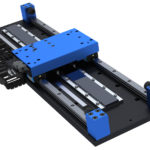 Yaskawa Motoman recently collaborated with Mayo Medical Laboratories, Rochester, Minn., to implement a state-of-the-industry specimen automation system.
Yaskawa Motoman recently collaborated with Mayo Medical Laboratories, Rochester, Minn., to implement a state-of-the-industry specimen automation system.
The laboratory handles tens of thousands of patient vials every day from more than 3,000 tests across the full spectrum of clinical laboratory subspecialties. Laboratory leadership wanted to continue to improve turn-around time from when specimens are received by Mayo Medical Laboratories internal operations to when the specimens arrive at the one of 60 clinical laboratories for testing. The operations team also wanted perfect accuracy when directing specimens through pre-analytic workflow.
This obsession with accuracy is critical to patient care; according to industry research that analyzed errors in clinical laboratories, nearly 70% of mistakes happen in the pre-analytic phase — during sample collection, handling or processing.
 Several design challenges
Several design challenges
As the Mayo Medical Laboratories test volumes continue to increase, the staff needed robust automation to meet aggressive productivity goals. The previous automation line was limited to handling from 2,500 to 3,000 vials per hour and required a certain level of manual pre-sorting. While one-in-one-million quality defects is acceptable in some types of manufacturing, this level of inaccuracy is unacceptable for a patient care provider and commercial reference laboratory handling one million patient specimens every week.
So Yaskawa engineers and a team from Mayo Medical Laboratories evaluated potential solutions for addressing the laboratory’s goals and then settled on a new installation in August 2014. The solution included a large track-based system with six configurable Yaskawa AutoSorter 1200T output sorters.
The new line also included six container scanning system (CSS) stations, which read specimen labels and link them to radio-frequency identification (RFID) tags on conveyor pucks. Once the CSS establishes the bond between specimen and tag, the station sends the specimen to the main conveyer and directs it to the proper destination.
The automation system also determines the configuration of certain specimens before routing them to their sort targets. If the system identifies a specimen in an unsuitable container, the line routes the vial to a designated sort target for pour-off into a container.
As the new specimen automation system is processing patient specimens, the line can provide information to the laboratory information system concerning specimen history and status. This ensures specimen traceability, including target rack, column and row. Along with recording specimen location, the line reports and logs when an operator empties a drawer and scans a barcode on the rack to provide a contents manifest.
 Capabilities of the new automation system
Capabilities of the new automation system
“Laboratory personnel can place specimens right on the new line, and we can route 80% of all specimens through automation,” said Aaron Maixner, an operations manager for Mayo Medical Laboratories. “Prior to August 2014, only 60% of the daily volume was processed via automation.”
Higher throughput is from the system’s ability to sort 6,000 specimens per hour, a 100% increase over the prior line’s speed. The line can also sort vials into 540 targets versus the previous system, which topped out at approximately 320 targets.
Along with increased speed, the new line catches errors as it receives specimens, rather than further downstream which occasionally compounded delays and slowed production. According to Maixner, the laboratory hasn’t experienced any incorrect sorting since implementation of the new specimen automation system.
The new line can accurately identify when vials need to be poured off, too. Pour-offs, says the laboratory, take additional time. By increasing accuracy and speed, the laboratory’s new specimen automation system has optimized customer turnaround time. The improvements ultimately speed delivery of correct results for patients and physicians.
Yaskawa • www.yaskawa.com
You may also like:
Filed Under: Medical-device manufacture










Tell Us What You Think!